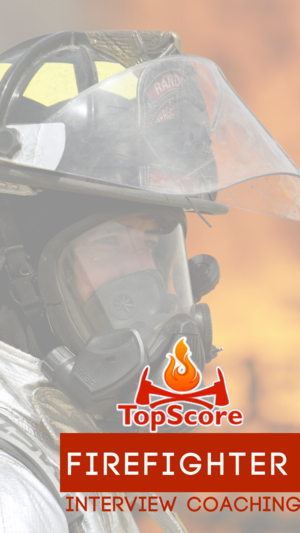“Firefighter rescue from a lower grade, confined area, collapse voids, where basement situation can be one of the most difficult rescue efforts to perform. As was revealed in a firefighter fatality incident in Columbus, Ohio involving fire for you John Nance, the difficulty of raising the unconscious weight of a firefighter (approximately 200 to 300 pounds) vertically is extremely difficult and dangerous to both victim and rescuers. The following case study provided humbling experience that awakens the fire service to the need for improved training firefighter rescue and survival
-Excerpt from “Firefighter Rescue and Survival” By: Ray Hoff and Bob Kolomay Pg: 195-198

The Story:
Saturday, July 25, started out as a routine day for Nance and the other men of Engine House Number Two. They began their 24-hour tour of duty at 8 that morning, and much of the early part of their day was spent doing the routine: They ran checks on a few fire hydrants. They polished their fire engines. They cleaned up around the station house. Saturdays usually are fun days to work at a downtown fire station. The mood is more relaxed than it is during the regular work week. Fire and squad runs are more infrequent. The thousands of downtown office workers are home in the suburbs. For the weekend, at least, their safety is the responsibility of some other fire department, or some other Columbus fire station.
This was Pizza Night at Station Two-a Saturday tradition that got started out of sympathy for Nance, the popular but overworked station-house cook. Fixing three meals a day for 21 hungry and finicky men is not an easy job, and not one that carries extra financial rewards for a shift’s designated cook, although he or she does then escape other chores. Nance was a good cook; his Sunday breakfasts-Army-sized helpings of eggs, ham, sausage, hash browns, waffles, pancakes and other dishes-were legendary. On Saturday nights, though, he rested, and the men ordered out for pizza.
The pizza arrived about 9:30 pm, just as Nance and a few other men were finishing a volleyball game on a makeshift court behind the station house. Volleyball is a big deal at Station Two. The firefighters play it to keep fit and to relieve the boredom that accompanies their hurry-up-and-wait profession. The men were sweating as they walked into the kitchen and sat down at the big dining room table. It was hot and muggy that night, the temperature still well into the 80s. Assistant safety director John Morgan was visiting as dinner began. Morgan, a dedicated fire chaser, often dropped by the station house just to check out the action. The group ate and talked.
Meanwhile, on the other side of downtown, a figure moved through a dark basement in the Mithoff Building at 151 N. High St. He pushed aside empty cartons and cardboard boxes, poured out a flammable liquid and set one, maybe two, possibly three, fires. As the men from Station Two were finishing their pizza, the person who had set the fires fled the building. The flames spread up the wall to the ceiling and the wooden floor joists in the basement. Smoke appeared over High Street.
The alarm
The first emergency telephone call rang into the divisional Fire Alarm Office just before 10:10 pm. It was someone calling from a pay phone inside the Clock Restaurant, next door to the Mithoff Building. Smoke was pouring out of the first-floor windows, the caller told the fire dispatcher. A few seconds later, two more calls came in-one from someone at a pay phone in the YMCA, another from a streetside phone on High Street. Both callers had the same report: smoke in the area of the Mithoff Building.
The fire dispatcher turned to his colleague on the alarm control board and reported the fire. The board officer pushed the alarm button and a high-pitched alarm tone echoed into the department’s two downtown fire stations, Engine House Number One, on the northern edge of downtown on North Fourth Street, and Nance’s Engine House Number Two. Capt. Ted Porter, the commander at Two that night, remembers hearing the tone and thinking, “Well, it’s time to go to work.”
The crews from Station Two boarded their fire engines and sped north on Fourth Street, sirens blaring. The caravan of green and red vehicles turned left on Long Street, going the wrong way on that one-way street, and took a right on High Street. The crews from Station One were closer. They raced west on Nationwide Boulevard, turned left at High and were in front of the Mithoff Building within seconds.
The first company to report on the scene was Engine One-at 10:12 pm. Arriving and reporting immediately after that were Engines Nine and Three. Nance was the acting lieutenant on Engine Three, which meant he was in direct command of three firefighters: engine driver Marvin Howard and hosemen Tim Cave and Don Weldon.
The initial attack
The fire department uses a special battle plan to fight downtown office building fires. Firefighters and equipment from the two downtown station houses are organized into two corresponding attack forces known as Task Force One and Task Force Two. These firefighting units have the specialized equipment designed to fight fires in high-rise buildings.
Task Force One took up position in front of the Mithoff Building. Arriving firefighters saw smoke coming out of the Wall Flower Shop, which was on the ground floor in the center of the four-story, 11,500-square-foot structure. Assistant Chief Neil Mills took charge at the scene, setting up a command post on High Street. Firefighters broke the glass front door of the flower shop with an ax and advanced a one-and-a-half-inch hose line from one of the engines into the building to search for the fire.
In the meantime, personnel from Task Force Two, Nance’s group, already had arrived at the rear of the building and were setting up in a staging area on Wall Alley. The firefighters saw smoke coming from the rear of the structure-in a one-story section that doubled as a storage area for Russell’s Tall Girl Shoes. The smoke was fairly heavy but was hanging close to sidewalk level. That indicated they were dealing with a basement fire. Capt. Porter took command in the rear. As the firefighters put on their air masks, he looked for water connections for the hose lines. He also was responsible for assessing the danger the blaze presented to nearby buildings, including the YMCA and the Clock Restaurant.
Nance’s Engine Three crew had been first on the scene in Wall Alley. It also was the first to complete suiting up. As their hose lines were charged with water, Nance, Cave and Weldon prepared to enter the shoe shop storage room. Cave used a sledge hammer to knock down the door. All three then went into the building, dragging the heavy hose line with them. Cave almost immediately had problems with his air mask and had to leave the building for a short time. By this time, however, crews from Ladder Two, commanded by Lt. Jim Welch, and Engine Two, commanded by Lt. Melvin Olney, had followed Nance’s group into the storage room. About 10 men from Task Force Two were now in the building.
Their job was to find the fire. “The smoke was dense, so we crawled forward,” says Don Weldon. “We were advancing the nozzle forward. The line was charged at the time, so it was hard to pull in. We were yelling back for people to feed us more hose in so we could advance more. While advancing, we were feeling the floor, testing the floor to see if it was spongy or if it was weak. And we were listening. Sometimes you can hear the fire actually popping or cracking. And we were looking for the glow.”
The second alarm
At 10:21 pm, Assistant Chief Mills called for a standby second alarm. That meant that extra equipment was to be sent to a staging area near the fire scene so that it could be drawn upon as needed. But the fire became a full-fledged, or working, second alarm even before the equipment reached the staging area. At 10:40 pm, it was upgraded to a two-alarm fire with extra companies. Firefighters still hadn’t seen any fire, but the volume of smoke was growing.
Battalion Chief Jerry Lindsay was part of the second wave of firefighters reporting to the scene. He went to the back of the building and took over command of Task Force Two. He remembers noticing that the smoke billowing from the building was starting to become thicker. He crouched in the rear doorway of the shoe shop, trying to size up the situation amid the noise and confusion of the fire scene.
As he looked into the building, he could see that the smoke seemed to be clinging to the floor of the storage room-a clear indication that there was fire in the basement.
Lindsay had fought basement fires before-they weren’t that tough to put out, as long as firefighters were able to get to the seat of the fire. But for some reason Lindsay felt nervous as he watched the smoke roll across the floor. In a report he filed after the fire, he wrote that there was something particularly “ominous” about this basement fire. It made him uncomfortable-gave him an unexplainable feeling of dread.
Fire hunting
Meanwhile, inside the smoke-filled building, the search for the fire continued-unsuccessfully, at first. The firefighters in the front and back were hampered, most of all, by the size of the building. It was more than 350 feet deep, from High Street back to Wall Alley. With all the smoke, the going was very slow. Crews had to crawl on all fours, keeping close to the walls or hose lines so they wouldn’t get lost.
The firefighters in the front-in the flower shop-had poor visibility, less than three feet with lights. They also encountered a lot of obstacles: merchandise, coolers for the flowers, display counters. Nevertheless, they managed to find a stairway down into the flower shop basement. They started to take a hose line down, but soon reached a point where they couldn’t advance the line any farther. Either the line was too short, or it was too heavy to carry with all the water charging through it. Their air tanks soon began to run low; they’d used a lot getting into the building and even more lugging the heavy line into the basement. So the firefighters in the front left the building, some of them running out of air before they could reach the street.
At the back of the building, Nance and his crew encountered the same visibility conditions. Even with flashlights, they could see only a few feet in front of their faces. They also felt excessive heat coming up from the floor, evidence that the fire was beneath them. They looked for an entrance to the basement, but couldn’t find one. Part of the problem was that they thought that the heat they were feeling was coming from the same basement that the Task Force One group had just found in the front of the building. In fact, there were two basements, separated by partitions and hallways.
Many of the firefighters in the shoe shop storage area were now becoming exhausted by the heat and were running out of air. Numerous men, including Nance and the firefighters in his crew, left the building to change air bottles and be hosed down with water. “Warning bells on the self-contained breathing units were ringing, and men were becoming physically exhausted from the combination of the hot, muggy weather, the heavy, nonporous turn-out gear, the extra weight of the air bottles and equipment, and the increasing heat from the fire which was building below them,” wrote Lindsay.
Lindsay says he saw Nance and the rest of his crew before they went into the building a second time. They were standing at the door, getting ready to make the second assault. “I talked to John,” says Lindsay. “I said I wanted him to take a rope with him. I wanted him to tie off a rope, a lifeline, and take it in with him. And I remember him saying, ‘Can’t we just follow the hose line in?’ And I said, ‘No, I want you to take a rope.’ Nance followed the chief’s orders and took the rope into the building.
Shortly after that, Lindsay ordered several other firefighters to take power saws into the building. The idea was to open holes in the floor so that firefighters could get water onto the fire. Two power saws were brought to the storage room door. Both were started before the remaining firefighters re-entered the building.
Firefighter down!
No one knows exactly how John Nance fell into the shoe shop basement. But fire officials now believe he was searching for a place to cut a hole in the floor when he tumbled through a hole that had been burned into the floor by the fire. The hole was about 70 feet from the Wall Alley doors, just to the left of another door in the storage room’s far wall, an entry to the shoe store.
Nance and his crew had reentered the building not knowing that power saws already had been ordered in to cut the floor. Cave was with him in the storage room at the time, checking the floor and looking for the fire. “I said, ‘We’ve got a fire burning underneath us. We’ve got to open the floor up,’ remembers Cave. “He said, ‘Go ask Chief Lindsay. Get the saw and ask him where he wants it opened up.’ ” Cave left the building, figuring that Nance would wait close to the hose line until he got back with the saw. But when he got back inside he saw another firefighter with a ladder and a saw standing near the hose line. But no Nance. “Where’s Nance?” Cave asked. “I don’t know,” the other firefighter replied.
While Cave was outside the back of the building, however, things were happening in the front. The crews from Task Force One had found the door from the shoe shop leading into the storage room, although they didn’t know that that’s where it led at the time. They thought they had reached the back of the building and the alley.
Brian Willison, the acting lieutenant on Engine 10, led the Task Force One crew. They had broken a window to get into the shoe shop, and were following the interior walls looking for the fire when they found the door. There was a lot of smoke, and they couldn’t see. Willison was confident they had reached the alley. “I was thinking if we were that close to the alley maybe we could go back and assist them with the lines,” he says. “So I started to go out the back, and as soon as I stepped out into the doorway I fell into the hole. As I was falling, I was grabbing for whatever. I got ahold of something and fell across the hole and I pulled myself out. And in the middle of pulling myself out I heard John screaming for help.”
Willison knew Nance was in deep trouble. The heat in the hole was intense; his legs had been burned as he scrambled to pull himself to floor level. He also noticed that the hole was about 12 feet deep and clogged with thick smoke. It was going to be hard to get Nance out of there. “The only thing I could see was an orange glow,” he says. “I couldn’t see any flames or lights or anything. All I could see was an orange glow. Of course, there was a lot of smoke. I answered him and then I radioed out that we had a man in the basement yelling for help.” Willison repeated the message three times. “Engine 10 to Command Post, we have a firefighter down! A firefighter has fallen into the basement and is trapped!”
The communications to Chief Mills, however, were garbled. He heard that a man was down, but didn’t get the information on where he was trapped. Mills assumed it was one of the guys who went in with Willison in the front of the building. He started checking heads. Finally, he determined it was one of the men from Task Force Two that was trapped. He then went to the rear of the building.
One of the firefighters who clearly heard Willison’s transmission was in the flower shop basement at the end of the hose line. He yelled on the radio for someone to drop a light through the hole so he could find the trapped firefighter. But that effort was futile. Nance was in a different basement.
At this point, Willison was running out of air and had a long way to go to get back to the front of the building. After he made his radio broadcast, he saw men with lights advancing through the back door. “I told John to hang on,” says Willison. “That they’d be with him in a second.”
One of the lights Willison saw was being carried by Tim Cave, who had reentered the storage room to tell Nance about Chief Lindsay’s saw order. When he couldn’t find Nance, he went ahead and followed the hose line to where it ended. “I heard someone say ‘Help!’ ” says Cave. “I had no idea it was John. I said, ‘Where are you?’ He said, ‘I’m right up here.’ ”
There’s an unwritten rule in the fire department: Never leave the safety of a hose line. In a smoke filled room it’s your only sure way out. But Cave had to leave the hose line to reach the source of the human voice that was calling to him. “I crawled on my stomach with my flashlight,” says Cave. “I found the hole and my arm went down. I asked, ‘Can you see my light?’ I stuck it down there. He said, ‘Yeah, I can see it.’ He was very calm, like he was just standing there waiting for me to get him the hell out of there. I said, ‘OK, how far down are you? Can you reach my hand?’ And he reached up and grabbed my hand. He must have been standing on some stock because it was a real deep basement. I was able to reach down and I could see his blue glove meet mine. All I could make out was a hand with my light on it.”
Cave tried to pull Nance out of the hole with one hand. But as he tugged, he began to feel himself slipping. “I was starting to slide into the same hole, too. Just the weight of him. I was starting to slip and I felt my shoulder starting to go. And I said, ‘I can’t pull you out.’ And he very calmly said, ‘OK,’ and gave me my hand back.”
“In retrospect, that’s kind of the way John was,” says Cave. “If I were in a hole and I was panicked and somebody stuck their hand down at me, I’d think that I’d hold on for all I got. He had enough presence of mind, knowing that he was trapped, that there was no way I could one-hand him out of there.”
Cave saw lights advancing toward him from the alleyway and yelled out. Lt. Welch and several other firefighters hurried their pace and gathered with Cave around the hole.
By this time, Willison’s frantic radio message had reached every firefighter on the scene at the Mithoff Building. Everyone was aware that someone was trapped, although most had no idea yet who it was. “The next few minutes bordered on pure confusion,” wrote Lindsay in his report. As firefighters lunged out of the fire building, desperately low on air, Lindsay called for fresh crews to attempt a rescue.
“There was no doubt in my mind at the time that we were going to go in and get him. It was as simple as that. I just couldn’t conceive of not being able to get him out of there.”
Lindsay waited by the storage room door, “fully expecting at any second to see one or more firefighters dragging or carrying the firefighter from the building. I became more and more concerned as the smoke became the thicker and no rescued firefighter appeared.”
The rescue attempts
Inside the building, things were just as hectic and confused. Lt. Welch and firefighter Weldon and others had brought in another hose line and rope to try a rescue. The first man on the hose attempted to pour water into the hole to cool Nance off. But the hose wouldn’t reach. The men then found the rope that Nance brought into the building and decided to lower it to him and pull him out. Nance grabbed the rope. “There were three of us that pulled up,” says Lt. Welch. “We had a weight on the rope, but when we got up to within about three feet of the hole we just lost all the weight. It was like you got a fish on the line and then the fish fell off. I knew we needed more people to hoist the line because there was a tremendous amount of weight on there.” Nance stood 5-foot-8 and weighed 162 pounds-but with his equipment he probably weighed closer to 300 pounds. Welch went outside for more help.”
In the meantime, the firefighters still at the hole tried another rope rescue. This time, Weldon tied a bowline knot in the rope to give Nance something to hold on to. Nance himself tied two more knots in the rope once it was lowered to him. There were more men pulling on the rope this time. But the attempt failed. Nance, who by this time was becoming exhausted by the heat, fell off the rope about halfway up. Somebody yelled that they needed a ladder. Nance agreed. “Get me a ladder,” he said. Within minutes, the firefighters had more ladders than they knew what to do with. Everyone wanted to help.
One of the ladders was lowered into the hole. But the hole was not big enough to allow a man to squeeze through it with a ladder in place. So the firefighters spent the next few frantic minutes enlarging the hole.
While they worked, the conditions in the building and especially around the hole were deteriorating. The heat in the hole was intense; the firefighters could feel it through their knee pads and gloves, which are rated to withstand temperatures of more than 1,000 degrees. Nance’s protective fire gear was keeping him from being burned. But he also was running out of air; carbon monoxide from the smoke was entering his bloodstream, making him lightheaded and disoriented. Several firefighters heard him say, “I need air.”
With the hole finally enlarged, the firefighters worked quickly to lower the ladder again. Nance started to climb-but he was coming up the wrong side, the underside of the ladder. He struck his head several times on the floor joists. Firefighter Tim Strominger, of Station Two, leaned into the hole and tried to help Nance get turned around. An air bottle was lowered into the hole.
“I was on my stomach, trying to reach down,” says Strominger. “I shined my light down there and he started climbing up the ladder. He was climbing up the ladder, but he was climbing up the wrong side. There was no way he could get up. I reached down there to try and get him around to the other side. I had his hands, trying to turn him around. I thought he was home free... And then he fell... I could see the fire where he was, where the hole was. Then my air bottle started ringing, and I had to get out of there.”
The conditions in the hole were becoming hellish. Strominger had been in the hole only a few minutes. But when he got outside, steam was rolling off his body. He couldn’t move. He just fell to the ground. Strominger’s hair was so hot that a fellow firefighter burned his hand lowering the exhausted firefighter’s head to the ground. Later, at a hospital, his body temperature was measured at 106 degrees.
Back inside, firefighter Art Wiley tried a dramatic rescue. “Wiley started to climb down the ladder, but didn’t have sufficient clearance to get down with his air bottle on,” wrote Chief Lindsay of the rescue attempt. “At this point, there was a lot of heat and smoke coming up through the hole, and some fire visible from the underside of the floor. He asked to have someone cut the hole larger so that he could get down.” Wiley then took a hose and again started down the ladder into the basement, taking the hose with him and trying to knock down the fire as he descended toward Nance, who by this time was unconscious at the base of the ladder. Wiley reached the bottom and grabbed hold of Nance with one hand, using the hose in his other hand to fight back the fire. He pushed and pulled for several minutes, as the flames spread around him. But he did not have the strength to pull the unconscious firefighter up the ladder. The heat was too intense. Wiley was running out of air and was becoming exhausted. Finally, when the warning bell on his air tank went off, Wiley was forced to try to save himself. He let go of Nance and struggled back up the ladder. He managed to get out of the building, but collapsed in the alley and passed out.
As Wiley was leaving the building, other firefighters could hear the warning bell ringing on Nance’s air tank. A rescue was critical now. The unconscious Nance had only two minutes of air left. Firefighter John Brining, of Rescue Two, was next to go into the hole. He, too, went down the ladder with a hose line, fighting the fire as he went. “I kept stepping off trying to find him,” Brining recalls. “As I went down, I thought I was close to the floor. I kept reaching out with my foot to step off to the floor. But there was no floor there. I went down another rung and it was the same thing. Finally, I got down to the floor level and stepped off. Evidently, I just stepped over top of him or he was behind the ladder. I’m not sure which. I took an inch-and-a-half hose line and I was probing around with my feet, throwing water to keep the fire down. The fire was rolling between the joists, like in slow-motion animation. I was below that. There were a bunch of cardboard boxes down there. And by this time, his bell had quit ringing. I couldn’t find him. If he would have had some kind of alarm system device so I could have located where he was at, or a flashlight, it would have been a lot easier to find him.”
“I think I stepped on him on my way out,” Brining continues. “But my alarm bell went off. When you get low on air you’ve got about two minutes left when the bell starts to ring. And I knew I was deep into the building. Sometimes two minutes is not enough. By the time I got to the back of the building I was sucking the mask to my face. I was out of air.”
Nance was out of air, too. The building was getting hotter and smokier by the second. Fire began to show in the upper floors. Conditions were beginning to look as though they might soon be ripe for a flashover, or perhaps even a backdraft explosion,” recounted Lindsay. “I wasn’t sure how many firefighters were still in the building. Chief Mills indicated to me that we’d better be thinking about ordering everyone out of the building.”
“It was about this time that Victor Runkle of Rescue Two came up to me and said, ‘Can I try to him?’ At first I said, ‘No-things are going downhill too fast-we can’t risk it.’ But not willing to give up at that point, Runkle persisted and I told him, ‘OK, but I want a rope tied around you, and have someone else go in with you.’ Gary Cox of Ladder Eight joined Runkle as they entered the building. They followed the hose lines toward the hole. But before they could reach it, the fire and smoke conditions got dramatically worse and Mills and Lindsay decided everyone had to be evacuated. Flames were clearly visible on the upper floors now. “I grabbed two fresh firefighters from the crew of Ladder 13 who had responded to the third alarm,” remembers Lindsay. “I carefully instructed them: ‘I want you to follow this rope and hose line into the building and tell everyone in there to get out immediately.’ They did so, and in a minute or two everyone in the fire building-except acting lieutenant John Nance-came out into the alley.”
The building was now completely engulfed in flames. Still, the firefighters wanted to go back in and get Nance out. Some even tried to enter the burning building in their street clothes. “There was a guy down there,” says Arson Squad Lt. Greg Lee. “We don’t lose guys. We save them. We can whip fire. Fire can’t whip one of us. It was just inconceivable to accept the fact that there was nothing you could do.”
“The mood outside was total emptiness,” adds Capt. Porter. “You are watching that building burn and you’ve got a friend in there. My thought was, ‘What’s going through his mind?’ Of course, at that time he was unconscious, I’m sure. But you just look at that building and it’s burning and there goes a man’s life. It’s a horrible feeling.”
There were several last-ditch rescue attempts. Several firefighters opened manholes to see if they led into the basement. None did. Other men tried to cut a hole into an old elevator at the side of the building, in hopes that it would lead to the basement, too. It did not. “By that time it was obvious to all of us,” says Porter. “We knew he was long out of air. It became a situation where we just wanted a recovery. We didn’t want him to stay there. And there was that one-in-a-million shot. You just keep thinking, ‘Maybe, maybe, maybe.’ ”
But it was not to be. The fire spread throughout the building. It went to four alarms and was finally contained at 5:07 am. Nance’s body was recovered from the rubble in the basement shortly after noon on Sunday. The unused second air bottle that his comrades had lowered to him was lying beside him. The Franklin County coroner later found that the carbon monoxide level in Nance’s bloodstream was 64.7 percent. A level of 6 percent is enough to cause death. The coroner said the cause of death was asphyxiation.
“Murder” is the term the police and fire departments are using. So far, they have no suspects.
Columbus fire department arson investigators are not talking about their investigation into the Mithoff Building fire. They have confirmed only that the fire was set, and that it probably started in the basement of the Wall Flower Shop.
“We cannot discuss the specifics of the origin of the fire,” says investigator Jack Ward, who is working on the case with Lt. Greg Lee. “These specifics are known only to the person who set the fire and to our investigators. This is the only tool we have to discern between persons who have actual knowledge of the fire and persons who claim to have actual knowledge of the fire.” In other words, it’s the only way they’ve got to weed out the crazies who like to confess to setting big fires.
Arson investigators are working closely with the Columbus police homicide squad on the investigation. The first few months were spent interviewing witnesses to the fire and tenants in the Mithoff Building. The federal Bureau of Alcohol, Tobacco and Firearms also is assisting with the investigation by doing lab work on the debris taken from the fire scene.
The Mithoff Building was owned by 155 North High Ltd., a limited partnership headed by Charles J. Ruma-a major Columbus real estate developer and co-owner of Beulah Park race track. Partnership papers filed in 1982 show that Ruma was the general partner. Limited partners included Ruma’s brother, Steven J. Ruma; Columbus architect Phillip T. Markwood; David C. Swaddling, vice president of Discovery Systems; and Fergus A. Theibert, an employee of the local office of NCR Corporation. The partnership purchased the four-story office building in August, 1982, for $795,000. Franklin County property tax records show that it had a current market value of about $1.1 million: $703,100 for the land and $396,900 for the building.
Ruma says he has no idea who would want to burn his building. “I just don’t know,” he says. “I know that the arson squad has been working on an investigation for the past couple of months. I really hope they bring it to a conclusion. We had nobody in that building who was controversial with respect to us as a landlord. It was a typical downtown office building. I can’t believe somebody would want to do it-that anybody would have any kind of a motive to destroy that building. This has been a very, very sad deal for me and, I’m sure, the Nances.”
Ruma says the partnership had $1 million insurance on the building. But he estimates that it would take $2.5 million to replace. (Fire department officials set damages at $3 million.) “When we pay off our mortgages we end up with nothing,” he says. “It was just a bad deal. The worst part was a life was lost. The second worst part is that we lost our investment.”
Less than half the space was rented at the time of the fire. Ruma says the first floor was occupied by the Wall Flower Shop, Russell’s Tall Girl Shoes and the Central Ohio Transit Authority’s customer service office. The upper floors were occupied by several businesses and organizations including the Ohio Public Interest Campaign, the Ohio Environmental Council and R.L. Polk & Company, makers of Columbus city directories.
The building was demolished after the fire.
It’s a 51-mile drive from Engine House Number Two to the 82-acre farm at the bottom of the hill on Long Run Road. Even on a good day, it takes more than an hour to get there from downtown Columbus. But John Nance didn’t mind the ride. He had grown up in Milo Grogan, a run-down inner-city neighborhood where barbed wire, not trees, lines the streets. He purchased the farm in 1974 because he wanted something better for his wife and three children. He bought himself a few cows, planted a little corn. The farm was his escape-from the city and from the pressures of his job. When he wasn’t farming, he might be hunting or fishing. He went to so many antique shows-looking for tools and furniture he could use on the farm-that his firefighting buddies took to calling him the “Junk Collector.” He enjoyed working with wood and metal and made little knickknacks which he often gave away as gifts. It was a simple life, built around his family and the farm.
By 1987, his children were grown and had their own families. For Nance, all that remained was to retire and fix up the old farmhouse. He and his wife, Linda, planned to do a little traveling-to see their daughter in Kansas City and a son in Toledo. But most of all, John Nance just wanted to ride his tractor and tend to his crops and cows.
The tractor still sits where he last parked it, next to a sheet-metal pole barn on a knoll overlooking his farm house. Across from the pole barn, an aging corn crib still bulges with the lumber Nance had planned to use on the house. He had cut the wood himself, from trees on the farm. There are other reminders of John Nance here-little things that show how much he loved this farm. Nailed to a post on the cattle pen is a handpainted sign that reads, “John’s Girls.” It was a Christmas present from one of his wife’s friends. Mrs. Nance often joked that John treated his cows more like children than animals.
Down the hill, near the back door of the farmhouse, is another Christmas present: a bell given to Nance by one of his sons. Nance had painted the bell and hung it high on a pole that sits in the shade of a 100-year-old oak tree. Linda used it to call him in from the barn when dinner was ready.
These days, the dinner bell is silent. But inside the farmhouse, there is a bustle of activity. Dozens of firefighters from Columbus and other Ohio cities have spent the past four months renovating the house-completing the work that John Nance began. It’s their way of coming to grips with the death of a close friend.
Bonds are formed when men and women depend on each other for their lives. But even by fire department standards, the camaraderie that existed between John Nance and other firefighters was special. His coworkers respected and admired him. But the feelings and emotions ran deeper than that. When he died, they didn’t just lose a colleague. They lost a member of the family.
“If you could pick yourself out a friend, this was just about the kind of guy you’d want to pick,” explains Columbus firefighter Mike Miller, a close friend of the Nances and a leader of the remodeling project. “John was the type of guy that every time somebody else needed a hand, he was always the first one to jump in. He’d do anything for you, and you felt like you’d want to do anything for him.”
And so, working on their free time and using their own money, 70 to 80 of John Nance’s friends have quietly pitched in. They put up a new roof. They replaced all the windows and doors. They installed siding, poured a new cement floor for the basement, added a heating and air conditioning system, rewired the electrical systems, reworked the plumbing, put up new drywall, remodeled the bathroom and the bedrooms.
“We wanted to do something for him,” says Miller. “He was a good friend.”
For Linda Nance, the outpouring of help has been overwhelming and comforting. “I never expected anything like this,” she says. “It was a total shock. I knew John had a lot of friends. But these guys are just something special.”
Mrs. Nance-an attractive, petite woman with a touch of gray in her curly dark hair-didn’t stay at the farm much in the days and weeks after her husband’s death. The memories were just too painful. The fellowship and generosity of her husband’s friends have been bright spots in a bleak four months.
But as she walked around the farm on a recent autumn day, her emotions jumped from gratitude to sorrow. Standing on a hill overlooking her farmhouse, she suddenly became aware that once the work was done and the firefighters were gone, she would be alone. She cried.
“I’m just trying to take it one day at a time, sometimes an hour at a time. I know I’m staying here. But as far as anything else, I just don’t know.”
“John was not one for prestige or recognition of any kind,” Mrs. Nance added. “He did his job and he did it well. When the job was over, he wanted some peace and quiet and family around him. And I did, too.”
But that was taken away from Linda Nance on July 25-by an arsonist who never knew John Nance or cared about his dreams. “I haven’t had a chance to express the anger yet,” says Mrs. Nance. “And maybe I won’t. I hold things inside. Yet, the anger is there.”
“What do you do about it?”
Story By: Michael Norman a staff writer for Columbus Monthly
FFPG Drills: Firefighter Removal "Hole Through The Floor"
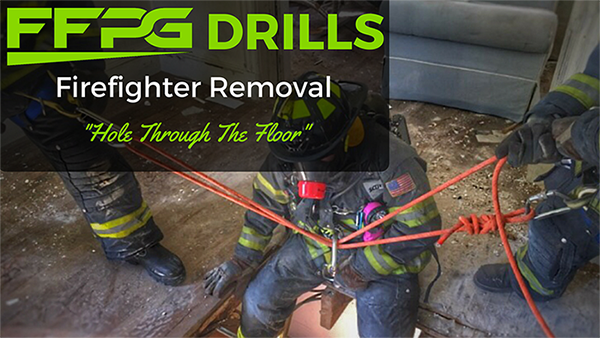
FFPG Drills: Firefighter Removal "Hole Through The Floor" Also known to FFPG as the "John Nance Drill"
FFPG conducted this drill to demonstrate one way of removing an unconscious firefighter from a basement. This drill was complete in 3 minutes, 33 seconds. Here is the drill uninterrupted and shot from multiple camera angles. In the future we will conduct this drill again in a more realistic scenario with a smoke condition. The purpose of this drill was mainly to feature this rope technique. Note: This procedure is used as a last resort. If stairways are compromised, if there is no additional access to a basement, and if portable ladders through the hole are not feasible, then this can be a go to move. It's also important for FFPG to mention that the fire conditions will dictate if this procedure is possible. Positioning a hand line is paramount to providing protection to both the down member and firefighters tasked with his removal. Your department and or company must train on this procedure extensively in a controlled environment prior to utilizing it at a true Mayday!
This procedure is an advanced skill and should only be performed by experienced and properly trained firefighters.
This is also dedicated to John Nance!
Please read the full story of his LODD when you can "The Murder of John Nance".
As always stay safe -FFPG
Links:
The murder of Columbus firefighter John Nance
Pain of that ‘terrible night’ remains for firefighters

 With that in mind, some companies carry bolt cutters to the roof (especially when taking the adjoining building) strictly to ensure you will be able to remove any fencing that separates yourself from the actual fire building.The angle grinder only weighs 4lbs, and if modified with a sling or strap, in my opinion, it’s a no brainer to take it over the bolt cutters when going to the roof.
With that in mind, some companies carry bolt cutters to the roof (especially when taking the adjoining building) strictly to ensure you will be able to remove any fencing that separates yourself from the actual fire building.The angle grinder only weighs 4lbs, and if modified with a sling or strap, in my opinion, it’s a no brainer to take it over the bolt cutters when going to the roof.



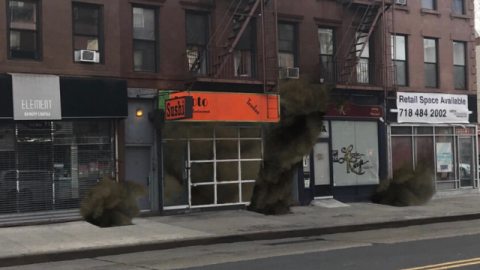
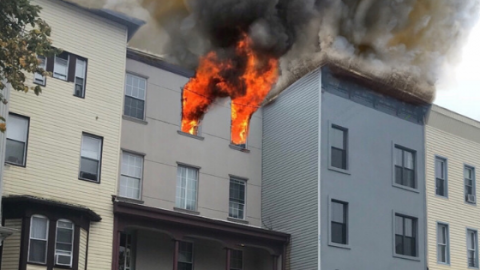
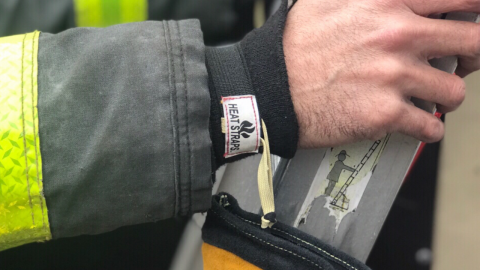
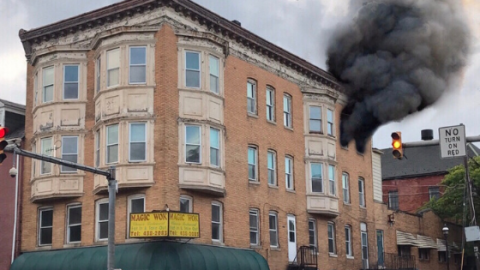
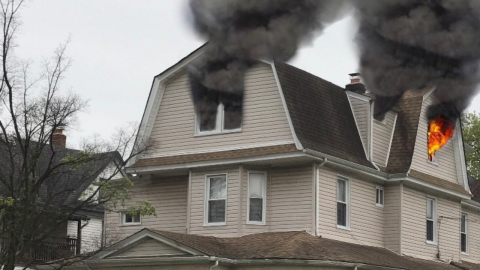

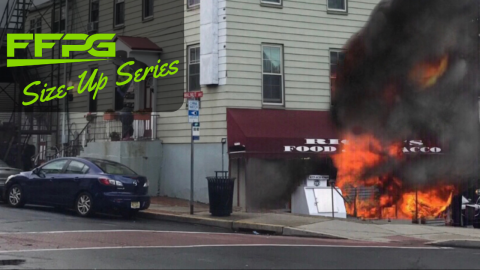
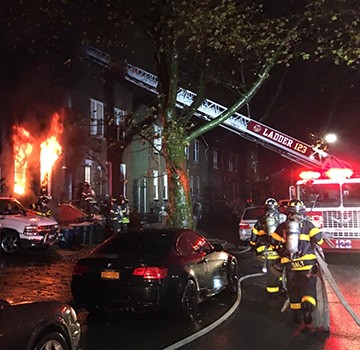

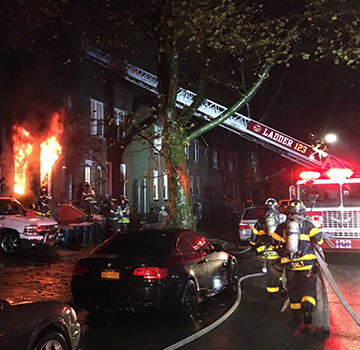 The Backstretch ( Fire to Hydrant): With this system, the first arriving engine apparatus stops in the front of the fire building. With the backstep in line, or just past the entrance, the hand stretch will begin. Firefighters estimate the amount of hose needed to reach the fire. Generally, pre-connected attack lines are not used when performing a back stretch. The hose will come from the back step, either from a static or dead bed. The nozzle firefighter takes a sufficient amount of hose, either one or two lengths (this will be discussed in a later post) then takes a few steps and stops. Next the back-up firefighter will take their folds. If staffing provides for more firefighters beyond this point, they would do the same. If not, the last firefighter will estimate and remove the remaining amount of hose needed for the stretch to reach the main body of fire and lay it along the curb line or on the sidewalk if possible. It's important not to place it in the street. This will delay and or impede positioning of later arriving aerial apparatus. Once enough hose is in the street the nozzle firefighter can advance through the building as the engine chauffeur is signaled to proceed to the hydrant. This allows the apparatus to stretch the remaining hose. Upon arrival at the hydrant, the chauffeur can now test and hook up the supply line. In an instance where a time consuming stretch is anticipated i.e. upper floors, or long hallways, the chauffeur can also break the line or control the stretch himself and connect to a discharge.
The Backstretch ( Fire to Hydrant): With this system, the first arriving engine apparatus stops in the front of the fire building. With the backstep in line, or just past the entrance, the hand stretch will begin. Firefighters estimate the amount of hose needed to reach the fire. Generally, pre-connected attack lines are not used when performing a back stretch. The hose will come from the back step, either from a static or dead bed. The nozzle firefighter takes a sufficient amount of hose, either one or two lengths (this will be discussed in a later post) then takes a few steps and stops. Next the back-up firefighter will take their folds. If staffing provides for more firefighters beyond this point, they would do the same. If not, the last firefighter will estimate and remove the remaining amount of hose needed for the stretch to reach the main body of fire and lay it along the curb line or on the sidewalk if possible. It's important not to place it in the street. This will delay and or impede positioning of later arriving aerial apparatus. Once enough hose is in the street the nozzle firefighter can advance through the building as the engine chauffeur is signaled to proceed to the hydrant. This allows the apparatus to stretch the remaining hose. Upon arrival at the hydrant, the chauffeur can now test and hook up the supply line. In an instance where a time consuming stretch is anticipated i.e. upper floors, or long hallways, the chauffeur can also break the line or control the stretch himself and connect to a discharge. 
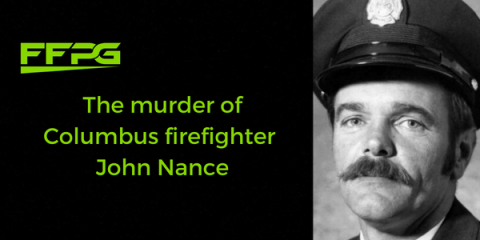



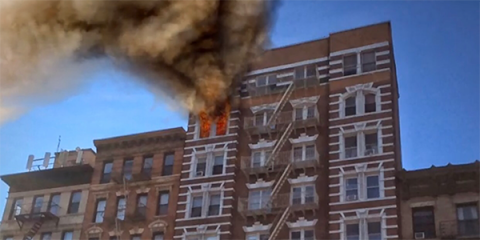
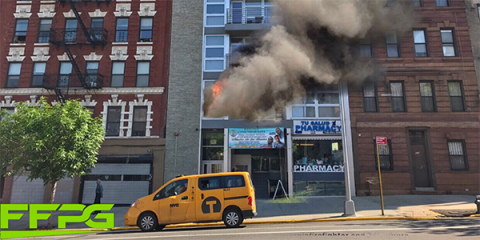
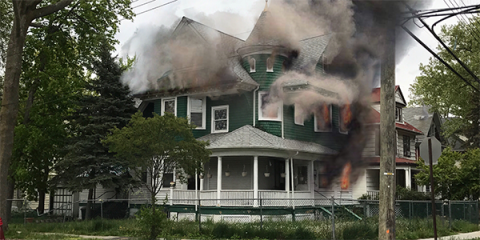
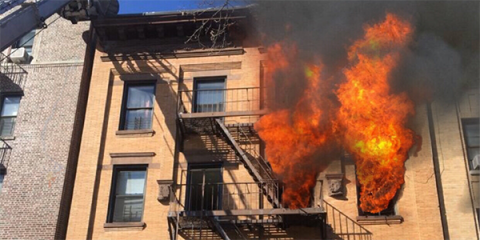
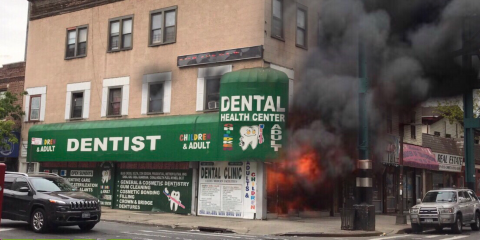
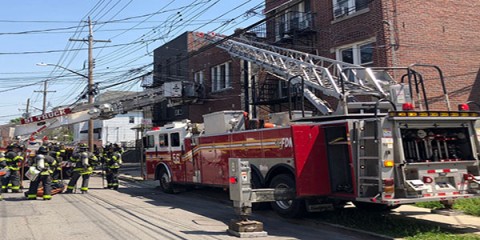





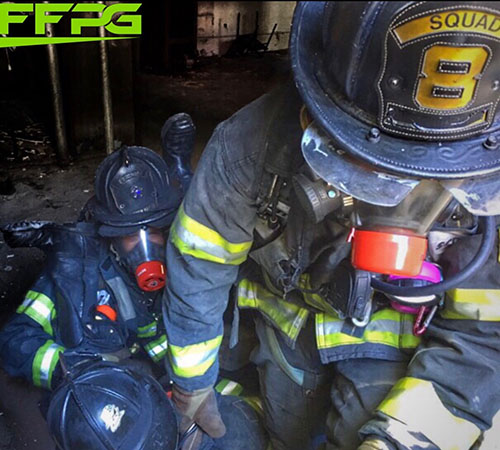 FFPG is run by a small team of career firefighters who work in various fire departments throughout the Northeast. Our key members work for the New York City Fire Department within the Special Operations Command. Some of our FFPG team members also volunteer in their towns’ local volunteer fire departments. All our members have over 10 years on the job, are rescue specialists trained in technical rescue, and hold technician level certifications in every discipline. From the inception of FFPG our goal was to let the content speak for itself. This community is not about us, but rather about sharing information we have learned from our own experiences and those before us, and of course motivating all firefighters, especially the next generation!
FFPG is run by a small team of career firefighters who work in various fire departments throughout the Northeast. Our key members work for the New York City Fire Department within the Special Operations Command. Some of our FFPG team members also volunteer in their towns’ local volunteer fire departments. All our members have over 10 years on the job, are rescue specialists trained in technical rescue, and hold technician level certifications in every discipline. From the inception of FFPG our goal was to let the content speak for itself. This community is not about us, but rather about sharing information we have learned from our own experiences and those before us, and of course motivating all firefighters, especially the next generation!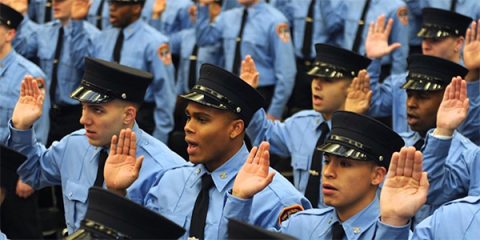
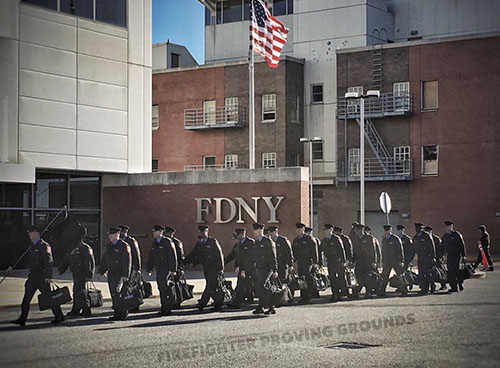 Our second point in this article, and again something that we can control easily, is our actions as a member of society. What do we mean by this? Good moral character is something that is required for any person preparing for or working in civil service. You might get a traffic ticket for speeding, or maybe running a red light. Are these necessarily disqualifications for employment? Well, if you tell the truth about them during your investigation, then most likely they will not be. If you lie about anything that may have happened in your past and get caught in that lie, then yes you can get disqualified for them. Good moral character includes being truthful and during your investigation that is exactly what you should be. The investigators can, and will, find out everything about you. Now if you are faced with bigger decisions, instances where you have the choice to choose between what you know is right and what you know is wrong, guess what… DO THE RIGHT THING. Don’t get behind the wheel after drinking, don’t commit any of the litany of criminal offenses that exist, choose your group of friends wisely and stay clear of illicit drugs and prescription medications that were not prescribed to you. Major offences like felonies are almost a guaranteed disqualification from most any civil service job.
Our second point in this article, and again something that we can control easily, is our actions as a member of society. What do we mean by this? Good moral character is something that is required for any person preparing for or working in civil service. You might get a traffic ticket for speeding, or maybe running a red light. Are these necessarily disqualifications for employment? Well, if you tell the truth about them during your investigation, then most likely they will not be. If you lie about anything that may have happened in your past and get caught in that lie, then yes you can get disqualified for them. Good moral character includes being truthful and during your investigation that is exactly what you should be. The investigators can, and will, find out everything about you. Now if you are faced with bigger decisions, instances where you have the choice to choose between what you know is right and what you know is wrong, guess what… DO THE RIGHT THING. Don’t get behind the wheel after drinking, don’t commit any of the litany of criminal offenses that exist, choose your group of friends wisely and stay clear of illicit drugs and prescription medications that were not prescribed to you. Major offences like felonies are almost a guaranteed disqualification from most any civil service job. tools, saws, deconstruct buildings to search for pockets of fire, encounter collapsed buildings that you may have to decide are or are not structurally stable, among many other things. Working in trades will allow you to gain knowledge in building construction, how to handle power tools, and how to work alongside others to complete a project. More important possibly than any of these things we just listed, working a long grueling day in the frigid cold, the blistering heat, or torrential rain will let you get use to the conditions that you will have to endure while working as a firefighter. We don’t take rain days, or snow days. We need to perform in any weather, at any time. The more you are used to working in these kinds of situations, will only make you a better firefighter.
tools, saws, deconstruct buildings to search for pockets of fire, encounter collapsed buildings that you may have to decide are or are not structurally stable, among many other things. Working in trades will allow you to gain knowledge in building construction, how to handle power tools, and how to work alongside others to complete a project. More important possibly than any of these things we just listed, working a long grueling day in the frigid cold, the blistering heat, or torrential rain will let you get use to the conditions that you will have to endure while working as a firefighter. We don’t take rain days, or snow days. We need to perform in any weather, at any time. The more you are used to working in these kinds of situations, will only make you a better firefighter.

